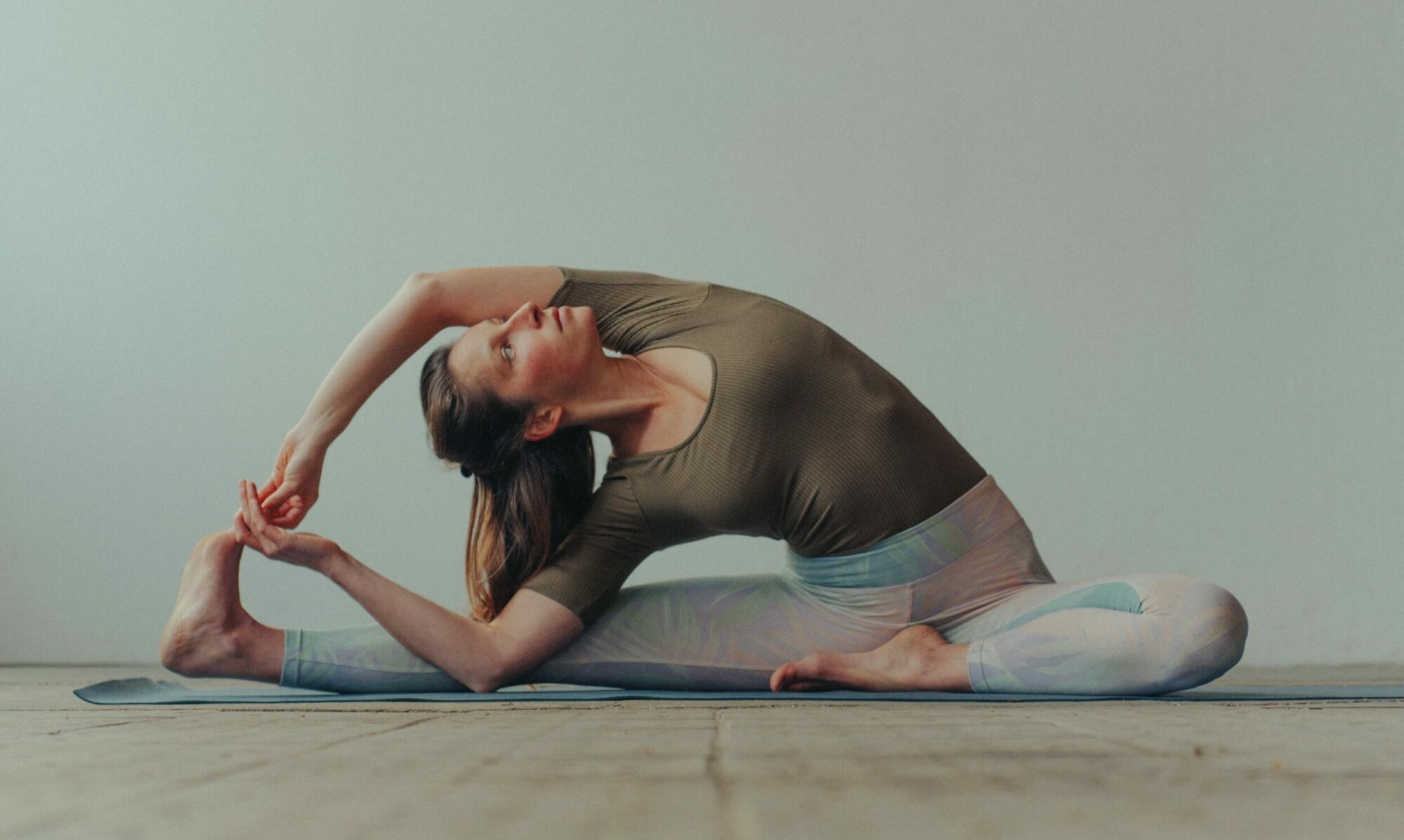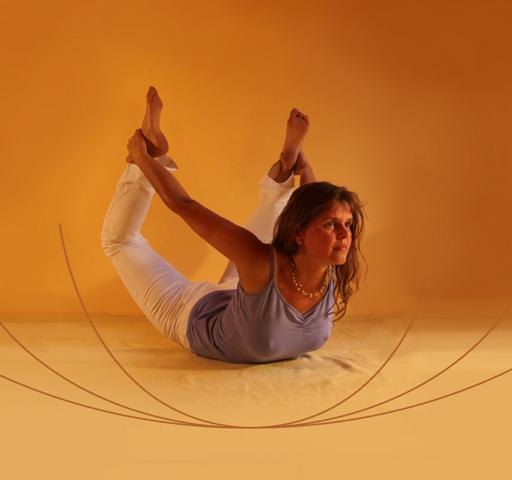What is an “own” dynamic and why does it need to be mentioned at all?
As a rule, the spine is strengthened muscularly and thus stabilized. It can also be moved in different directions: forwards, backwards and sideways. This is done under the holding force of the muscles or passively using various aids such as blocks, bolsters, cushions, blankets, etc.
The momentum – a dynamic from within itself – begins approximately in the middle of the spine, at the level of the ribcage or solar plexus, the maṇipūra-cakra. This is where forces are released that dynamically stretch the spine, i.e. make it longer. The solar plexus is a vegetative nerve plexus that consists of sympathetic nerve fibers (in contrast to the parasympathetic nerves, which contribute to relaxation). This is the logical starting point for the active performance, which relates to the dynamization of the spine and motivates it to expand and lengthen.
This stretching occurs in both longitudinal directions, upwards towards the thoracic spine and finally further towards the cervical spine, as well as downwards towards the lumbar and sacrum. The momentum ignites a veritable fire of expansion and lengthening of the spine.
The practice and role of free breathing
Focus your attention on the height of the solar plexus and relax your shoulders at the same time. Fixed or even cramped shoulders block this vital stretching out of the solar plexus. The relationship between the solar plexus and relaxed shoulders therefore deserves special attention. (maṇipūra-cakra / viśuddha-cakra)
In addition, the unfolding of the slipping tension requires a free-flowing breath in which the breathing rhythm is left entirely to itself. This means that the breath is not used for vitalization, for example, breathing in and out in a targeted manner and combining it with movement. It simply remains free.
A preliminary exercise for the perception of free breathing
You move your arms around the room and feel the breeze on your skin. You finally experience the air that fills the room as a delicate touch on the periphery of your skin. We move and breathe in this airspace. It is no longer unnoticed, it now becomes an essential part of our physical movement.
You can also observe how the breath comes and goes without you doing anything, how the lungs open, the breath flows in and is released harmoniously back out again. Over time, you experience yourself integrated into rhythmic breathing waves that come to you from outside.
With these preparations, you can, for example, do the balance, the camel, the bow or the plow – all exercises that require a strong spine. Imagine the maṇipūra-cakra, relax your shoulders, raise your ribcage slightly and become aware of your breath coming and going freely.
The spine will already begin to stretch in both directions from this center. You get into position, become calm and repeatedly observe these conditions. If the conditions are good, it is very easy to grab the body again and extend the spine. You can repeat this several times.
The following video clearly shows the “lengthening of the spine”:
The spine’s own dynamics ensure that it becomes strong, elastic and flexible in the various directions of movement. It protects the intervertebral discs from compression and thus also relieves back pain, for example in the lumbar region. As the whole body is virtually lifted out of gravity, it rises up and becomes longer, relieving the strain on the hip, knee and foot joints.
by Angelika

